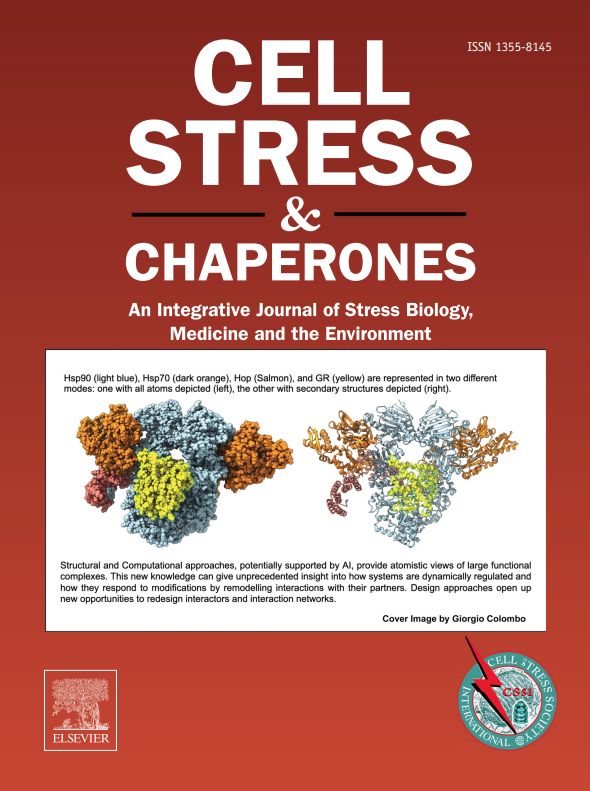Human milk-derived extracellular vesicles promote the heat shock response in polarized microglia
IF 3.2
3区 生物学
Q3 CELL BIOLOGY
引用次数: 0
Abstract
Milk-derived extracellular vesicles (MEVs) combat acute and chronic pro-inflammation in peripheral cells and tissues. However, the biological functions of MEVs in the central nervous system require exploration. We investigated whether MEVs activate the heat shock response (HSR) in polarized human microglia. MEVs were isolated from unpasteurized human donor milk (n=12 anonymous donors). Human microglia clone 3 cells were primed with 10 ng/mL interferon-gamma to induce polarization, and a subset of cells was supplemented with 200 µg of MEVs. The abundance of HSF1 and candidate heat shock proteins (Hsp70, Hsp90, Hsp40, Hsp27) was analyzed using quantitative reverse transcription polymerase chain reaction and western immunoblotting at 6 h, 12 h, and 24 h post-MEV treatment. We found that MEV treatment promoted the HSR in polarized microglia, compared to homeostatic cells. Furthermore, MEVs increased the duration of the HSR in polarized microglia, exerting robust and continued pro-survival benefits.
人乳源性细胞外囊泡促进极化小胶质细胞的热休克反应。
乳源性细胞外囊泡(mev)可以对抗周围细胞和组织中的急性和慢性促炎症。然而,mev在中枢神经系统中的生物学功能还有待探索。我们研究了mev是否通过激活热休克反应(HSR)来增强人小胶质细胞对极化的细胞保护。mev从未经巴氏消毒的人供乳中分离出来。人小胶质细胞克隆3 (HMC3)细胞用10 ng/mL IFN-γ诱导极化,一部分细胞补充200µg mev。在mev处理后6h、12h和24h,通过RT-qPCR和western免疫印迹分析HSF1和候选热休克蛋白(Hsp70、Hsp90、Hsp40、Hsp27)的丰度。我们发现,与稳态细胞相比,MEV治疗促进了极化小胶质细胞的HSR。此外,mev增加了极化小胶质细胞HSR的持续时间,发挥了强大和持续的促进生存的益处。
本文章由计算机程序翻译,如有差异,请以英文原文为准。
求助全文
约1分钟内获得全文
求助全文
来源期刊

Cell Stress & Chaperones
生物-细胞生物学
CiteScore
7.60
自引率
2.60%
发文量
59
审稿时长
6-12 weeks
期刊介绍:
Cell Stress and Chaperones is an integrative journal that bridges the gap between laboratory model systems and natural populations. The journal captures the eclectic spirit of the cellular stress response field in a single, concentrated source of current information. Major emphasis is placed on the effects of climate change on individual species in the natural environment and their capacity to adapt. This emphasis expands our focus on stress biology and medicine by linking climate change effects to research on cellular stress responses of animals, micro-organisms and plants.
 求助内容:
求助内容: 应助结果提醒方式:
应助结果提醒方式:


